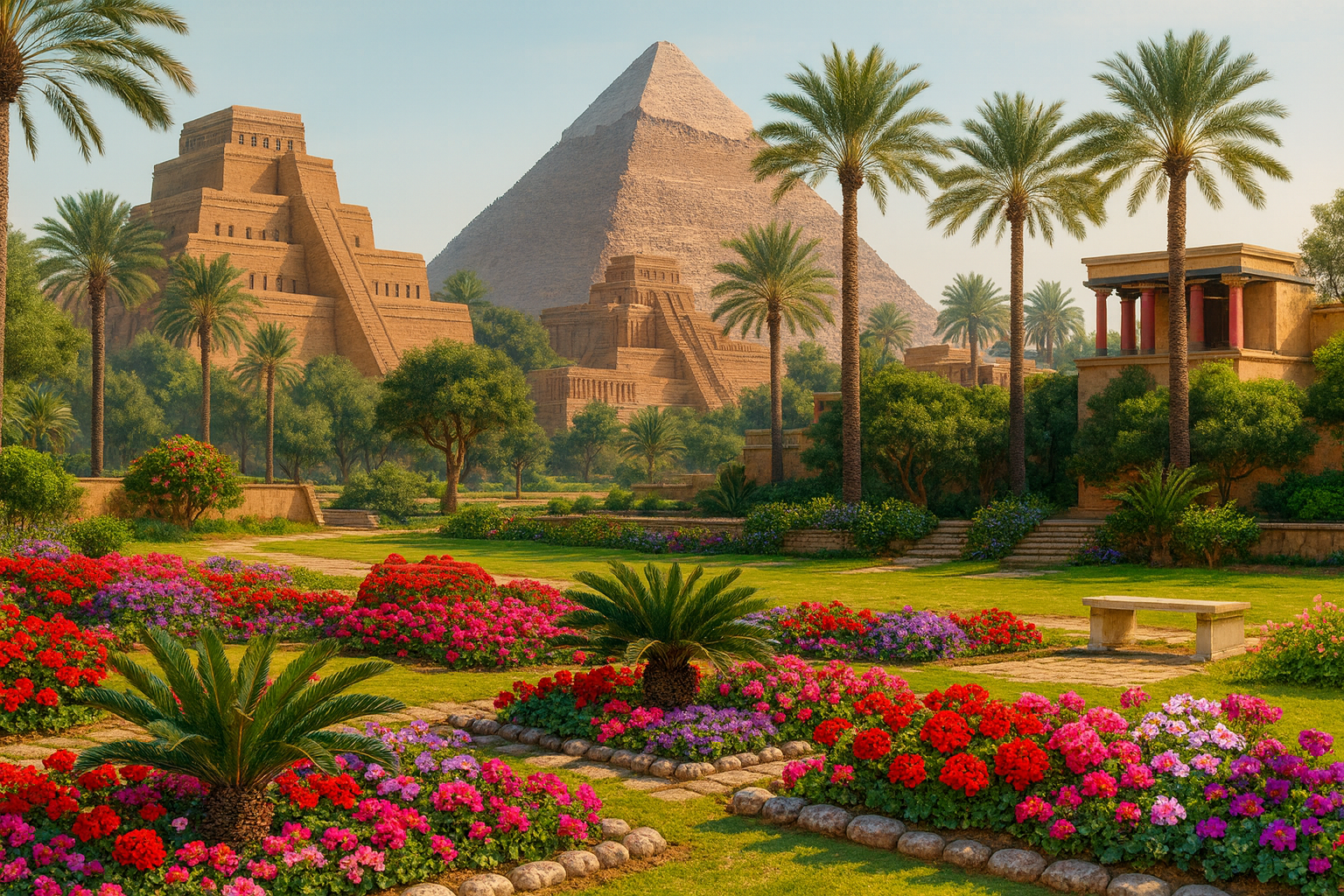In addition to being beautiful, flowers have served as significant cultural, religious, and political symbols throughout human history. The gardens of ancient civilizations such as Egypt, Mesopotamia, and Crete were decorated with a vast array of flowers, each carefully chosen for its beauty, fragrance, or symbolic meaning. The gardens functioned as places of worship and recreation, showcasing the beauty of the societies that constructed them. In the past, flowers were used for spiritual, medicinal, and decorative purposes and were essential to life.
Egypt: Revival and Respectful Blooms
In ancient Egypt, flowers were highly valued and closely linked to religious rituals, death, and the afterlife. The lotus, particularly the blue and white varieties, was one of the most iconic flowers in Egypt and represented the sun, creation, and rebirth. In art and architecture, the flower's daily cycle—which closed at night and opened with the sun—was commonly depicted as a powerful symbol of resurrection. Another significant flower was the papyrus plant, which was also used for its stalks, which were required to make papyrus scrolls.
Egyptian gardens are full of many kinds of plants, including lilies, roses, and irises, particularly those found in the tombs of the pharaohs. These flowers were believed to have protective qualities that would ease a person's transition into the afterlife in addition to their aesthetic value. By using flowers like myrrh and jasmine in incense and perfumes, the Egyptians demonstrated their appreciation for nature's fragrant offerings and acknowledged the importance of fragrance.
Mesopotamia: A Blooming Garden
In Mesopotamia, particularly in the ancient city of Babylon, gardens were regarded as a symbol of prosperity and divine favor. Among the many flowers believed to be plentiful in the Hanging Gardens of Babylon, one of the Seven Wonders of the Ancient World, were lilies, roses, and cypress trees. Although the exact arrangement and plant species are still unknown, flowers surely played a significant role in the design of these elaborate gardens.
The Mesopotamians also used flowers for medicinal and religious purposes. For instance, the poppy was used in healing rituals, and the date palm, with its delicate yellow flowers, was necessary for the production of the sweet fruit that sustained the population. Mesopotamian gardens were often enclosed spaces that provided a sanctuary of tranquility in an otherwise harsh environment. They blended flowers, water features, and fruit trees to create an area of abundance and spiritual renewal.
Meaningful Flowers and Cretan Daily Life
Crete, with its Minoan culture, was known for its vibrant gardens that blended the natural world with religious and cultural rituals. The Minoans often depicted scenes of nature with lilies, roses, and daisies in their frescoes and ceramics. These flowers were valued for their beauty as well as their deep symbolic connections to life and fertility.
One of the most famous flowers from Crete is the saffron crocus, which has bright purple blooms. Apart from its culinary uses, saffron was employed in religious ceremonies as a symbol of God's presence due to its vibrant hue. The Minoans also planted gardens with flowers, fruit trees, and vines to create spaces of beauty and tranquility inside their palaces. They were among the first to combine ornamental and practical plants in their gardens, which functioned as centers of commerce, recreation, and religion.
Conclusion: The Legacy of Ancient Flowers
By examining the flowers of ancient Egypt, Mesopotamia, and Crete, we can gain insight into the cultures that prized flowers for their visual appeal, fragrant qualities, and symbolic significance. These gardens were more than just recreational spaces; they were hallowed spaces that symbolized the values, beliefs, and resilience of their local communities. By studying the flowers that once graced these ancient lands, we can gain a better understanding of how people have long incorporated nature into their daily lives and spirituality. When we incorporate elements of these flowers into our modern gardens or plant the same species in our backyard, we are reviving a tradition that has endured for thousands of years.







